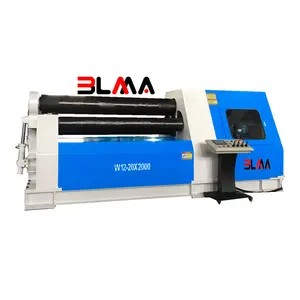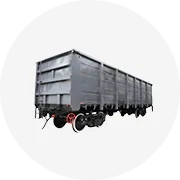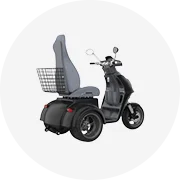Phổ biến trong ngành của bạn

Mì ống con lăn thép không gỉ Spaghetti Cutter mì cách nhấn Pasta maker máy cho Bosch
71,97 ₪ - 109,85 ₪
Đơn hàng tối thiểu: 2 Cái
Vận chuyển mỗi chiếc: 68,94 ₪


4 Rolls Tấm Sắt Tự Động Cnc Cone Cán Thép Máy Lạnh Tự Động Điện Rolling Máy
11.417,38 ₪
Đơn hàng tối thiểu: 2 Bộ


Nối dài sàn tường con lăn áp lực Con lăn cho hình nền sàn
47,58 ₪ - 49,55 ₪
Đơn hàng tối thiểu: 1008 Cái
Vận chuyển mỗi chiếc: 50,84 ₪


Nhà máy quay SB 50 gạo 10 inch EPDM gạo nhà máy thép con lăn cao su
79,55 ₪ - 94,70 ₪
Đơn hàng tối thiểu: 50 Cái
Vận chuyển mỗi chiếc: 757,54 ₪


Cao Cấp Vàng Thanh Brass Thuốc Lá Con Lăn Vuông Thanh Của Nhãn Hiệu Thuốc Lá Con Lăn Nhà Sản Xuất
58,71 ₪ - 73,86 ₪
Đơn hàng tối thiểu: 1 Hộp
Vận chuyển mỗi chiếc: 53,11 ₪

STARBUSS Hộp Cuộn Thuốc Lá Nhiều Màu 70MM Dụng Cụ Cuộn Thuốc Lá Tự Động Hút Thuốc Bằng Kim Loại
3,79 ₪ - 4,93 ₪
Đơn hàng tối thiểu: 120 Cái

DR-1V Đầu Bếp Prosentials Máy Cán Bột Điện, Máy Làm Bánh Pizza Thương Mại, Chứng Nhận ETL, Máy Ép Kẹo Mềm Dòng Mì Ống 15 Inch
Sẵn sàng vận chuyển
946,89 ₪ - 2.083,19 ₪
Đơn hàng tối thiểu: 1 Bộ
Vận chuyển mỗi chiếc: 1.537,80 ₪

Giá Máy Làm Cuộn Cơm Sushi Thủ Công Hình Vuông Tròn Thương Mại
1.704,46 ₪ - 2.007,47 ₪
Đơn hàng tối thiểu: 1 Bộ

Mì Máy Bột Sheeter Fondant Lăn Tortilla Pasta Pizza Maker Nhựa Noodle Maker Tự Động Noodle Maker
Sẵn sàng vận chuyển
526,49 ₪ - 564,37 ₪
Đơn hàng tối thiểu: 1 Bộ
Vận chuyển mỗi chiếc: 398,96 ₪

120 mét 125 Mét nhựa Rolling Machine lăn Maker cho giấy Rolling Machine
11,37 ₪
Đơn hàng tối thiểu: 2 Cái

Sambusa Siomai Làm Máy/Dumpling Empanada Sản Xuất Da/Tự Động Con Lăn Bột
Sẵn sàng vận chuyển
1.098,43 ₪ - 1.325,69 ₪
Đơn hàng tối thiểu: 1 Bộ
Vận chuyển mỗi chiếc: 633,11 ₪

Máy Làm Tách Bột Nhào Thương Mại Máy Cán Bột Viên Bằng Thép Không Gỉ Máy Làm Bánh Mì Hấp Tự Động
3.371,03 ₪ - 4.545,21 ₪
Đơn hàng tối thiểu: 1 Bộ

Thương Mại Perfect Tortilla Chapati Sản Xuất Sản Xuất/Roti Con Lăn Máy
4.545,21 ₪ - 7.575,35 ₪
Đơn hàng tối thiểu: 1 Bộ

Máy Cán Kim Loại Thủ Công 70Mm Con Lăn Thuốc Lá Máy Làm Thuốc Lá Cho Giấy
2,13 ₪ - 2,73 ₪
Đơn hàng tối thiểu: 50 Cái

Thuốc Lá Thiết bị xách tay biểu tượng tùy chỉnh bán buôn con 78 Mét Máy cán nhựa thuốc lá của nhãn hiệu tay thuốc lá Con lăn Maker
1,67 ₪ - 2,96 ₪
Đơn hàng tối thiểu: 50 Cái

Thuốc Lá Con Lăn 70MM 110Mm Máy Con Lăn Có Thể Uống Được Bằng Nhựa Máy Làm Thuốc Lá Con Lăn Xì Gà Bằng Tay
1,63 ₪
Đơn hàng tối thiểu: 200 Cái

Pasta Maker Máy Hand Crank Con Lăn Cutter Mì Nhà Sản Xuất Tốt Nhất Cho Tự Chế
Sẵn sàng vận chuyển
28,41 ₪ - 54,93 ₪
Đơn hàng tối thiểu: 1 Bộ
Vận chuyển mỗi chiếc: 127,42 ₪

Thuốc lá 82 Mét Con lăn Maker nhựa uống Con lăn Máy cán Maker bằng tay
1,29 ₪ - 1,41 ₪
Đơn hàng tối thiểu: 72 Cái
Vận chuyển mỗi chiếc: 0,5303 ₪

Thương Mại Pita Hãng Sản Xuất Bánh Mì/Bánh Pizza Bột Con Lăn Máy/Bánh Pizza Máy Ép
1.969,59 ₪ - 7.499,60 ₪
Đơn hàng tối thiểu: 1 Bộ

Tùy chỉnh chịu mài mòn tác động nhựa PU cao su băng tải con lăn làm biếng nhà sản xuất
0,3788 ₪ - 3,79 ₪
Đơn hàng tối thiểu: 100 Cái

Công Nghiệp Máy Làm Bún Bột Con Lăn Điện Sản Xuất Mì Tự Động Mì Điện Nhà Sản Xuất Mì Ống
1.893,84 ₪
Đơn hàng tối thiểu: 1 Bộ

Bán Trực Tiếp Máy Cán Thuốc Lá Bằng Thép Kim Loại 110Mm Phụ Kiện Hút Thuốc Máy Cán Thuốc Lá Thủ Công
1,48 ₪ - 1,63 ₪
Đơn hàng tối thiểu: 50 Cái
Vận chuyển mỗi chiếc: 8,45 ₪

Bánh Pizza Bột Bóng Lăn Máy/Bánh Roti Maker Với Miễn Phí Bột Máy Trộn
3.030,14 ₪ - 7.575,35 ₪
Đơn hàng tối thiểu: 1 Bộ

Máy Cuộn Thuốc Lá Điện Gia Dụng Tiện Dụng Máy Phun Thuốc Lá Tự Động Mini Máy Làm Con Lăn Thuốc Lá
18,91 ₪ - 22,35 ₪
Đơn hàng tối thiểu: 10 Cái
Vận chuyển mỗi chiếc: 41,93 ₪

Mini 78Mm Nhựa Cầm Tay Thuốc Lá Cán Máy Thuốc Lá Của Nhãn Hiệu Tay Thuốc Lá Con Lăn Nhà Sản Xuất
1,07 ₪ - 2,28 ₪
Đơn hàng tối thiểu: 120 Cái

Thép Không Gỉ Thương Mại Điện Tươi Mì Máy Làm Bột Con Lăn Tấm Máy Ramen Mì Ống Nhà Sản Xuất
1.136,31 ₪ - 1.893,84 ₪
Đơn hàng tối thiểu: 1 Bộ
Vận chuyển mỗi chiếc: 1.541,82 ₪

110V mì điện máy thép không gỉ Máy tính để bàn Spaghetti bột Báo Chí Con lăn nhào Pasta maker
594,67 ₪ - 636,33 ₪
Đơn hàng tối thiểu: 1 Bộ
Vận chuyển mỗi chiếc: 814,35 ₪

Honeypuff hút thuốc nhựa Rolling Machine 110 Mét thuốc lá Con lăn Maker 12 cái mỗi hộp hiển thị Mix 4 Màu sắc cán Nguồn cung cấp
2,81 ₪ - 3,22 ₪
Đơn hàng tối thiểu: 60 Cái

2024 nhà máy điện Rolling Machine thuốc lá tự động Maker 8 mét thuốc lá Con lăn thuốc lá khay ống hút phụ kiện người đàn ông
132,57 ₪
Đơn hàng tối thiểu: 2 Cái

2400W Nhà máy cung cấp maquina de hacer conos de oblea Ice Cream Waffle Cone Maker Con lăn máy móc điện Wafer cones Maker
128,79 ₪ - 246,20 ₪
Đơn hàng tối thiểu: 1 Bộ

Bán buôn điện thuốc lá Con lăn Maker tiêm Ống công cụ Kit tự động thuốc lá Rolling Machine
109,85 ₪ - 125,00 ₪
Đơn hàng tối thiểu: 100 Cái

Thuốc Lá 70Mm Con Lăn Nhà Sản Xuất Nhựa Uống Con Lăn Máy Thuốc Lá Xì Gà Cán Nhà Sản Xuất Bằng Tay
1,22 ₪ - 1,48 ₪
Đơn hàng tối thiểu: 480 Cái
Vận chuyển mỗi chiếc: 13,07 ₪

Máy Làm Bánh Bao Ngọt Momo Kiểu Mới, Mịn Và Đẹp Mắt 2021
Sẵn sàng vận chuyển
12.309,94 ₪
Đơn hàng tối thiểu: 1 Bộ
Vận chuyển mỗi chiếc: 1.924,90 ₪

Nhựa Của Nhãn Hiệu Thuốc Lá Ống Điền Con Lăn Nhà Sản Xuất Cho 8 Mm Thuốc Lá Thuốc Lá Rolling Machine Injector
1,33 ₪ - 1,86 ₪
Đơn hàng tối thiểu: 2 Cái
Vận chuyển mỗi chiếc: 20,84 ₪

Ethiopian Điện Tự Động Lumpia Trứng Crepe Da Cuộn Con Lăn Ethiopia Nướng Wrapper Nướng Nhà Sản Xuất Làm Máy
32.195,22 ₪
Đơn hàng tối thiểu: 1 Bộ

Mini 78Mm Nhựa Cầm Tay Thuốc Lá Cán Máy Thuốc Lá Của Nhãn Hiệu Tay Thuốc Lá Con Lăn Nhà Sản Xuất
1,48 ₪ - 1,86 ₪
Đơn hàng tối thiểu: 480 Cái

Máy Làm Mì Ống Điện Nhỏ Tại Nhà Máy Làm Mì Ống Máy Làm Mì Ống Rau Củ
162,87 ₪ - 246,20 ₪
Đơn hàng tối thiểu: 1 Cái

Mức độ an toàn cao giấy chứng nhận CE Tortilla Báo Chí Con lăn Maker đơn giản
2.651,38 ₪ - 3.408,91 ₪
Đơn hàng tối thiểu: 1 Bộ
Vận chuyển mỗi chiếc: 770,04 ₪

Sử dụng thương mại tự làm sushi Con lăn Maker/máy tính để bàn Sushi Gạo Làm Robot Máy
Sẵn sàng vận chuyển
1.890,05 ₪ - 2.268,82 ₪
Đơn hàng tối thiểu: 1 Bộ
Vận chuyển mỗi chiếc: 193,71 ₪
Các danh mục hàng đầu
Giới thiệu về máy tạo con lăn
Alibaba.com cung cấp các sản phẩm 25820 máy tạo con lăn. Có rất nhiều máy tạo con lăn lựa chọn dành cho bạn, chẳng hạn như nhà máy sản xuất, vật liệu xây dựng cửa hàng, và máy móc cửa hàng sửa chữa. Bạn cũng có thể chọn từ úc, malaysia, và thái lan máy tạo con lăn. Cũng như từ động cơ, hộp số, và mang máy tạo con lăn.Và bất kể máy tạo con lăn là mới, sử dụng.





















